The craze for outdoors has seen a great high in the last few years. There are more number of people going on treks or doing adventure activities now than ever before. Its a good sign, but what is not good is the lack of preparation by the people before indulging in such trips. I have seen people coming on treks without even knowing what it is all about. This attitude can be dangerous both to yourself and the environment. While stepping into the wilderness, it’s our duty to follow the guidelines correctly. We need to respect the mountains only then will the mountains respect us. I consider myself as a nascent trekker that is yet learning about the mountains and trekking. Yet, I have made a simple guide from whatever learning I had through my years of trekking in the Himalayas. If you are a first-time high altitude trekker, I hope this guide helps you in becoming a responsible trekker and makes your first trek enjoyable:
1. No Alcohol

You would have often heard seasoned trekkers / trek operators advising you to refrain from alcohol on high altitude, yet there are people that ignore this advise. Alcohol consumption leaves your body dehydrated and can result in Acute Mountain Sickness (AMS) and Hypothermia, which is the most common and dangerous thing to encounter while trekking. Not following this advise has often resulted in health emergencies and incomplete treks for many.
2. The Perfect Shoes
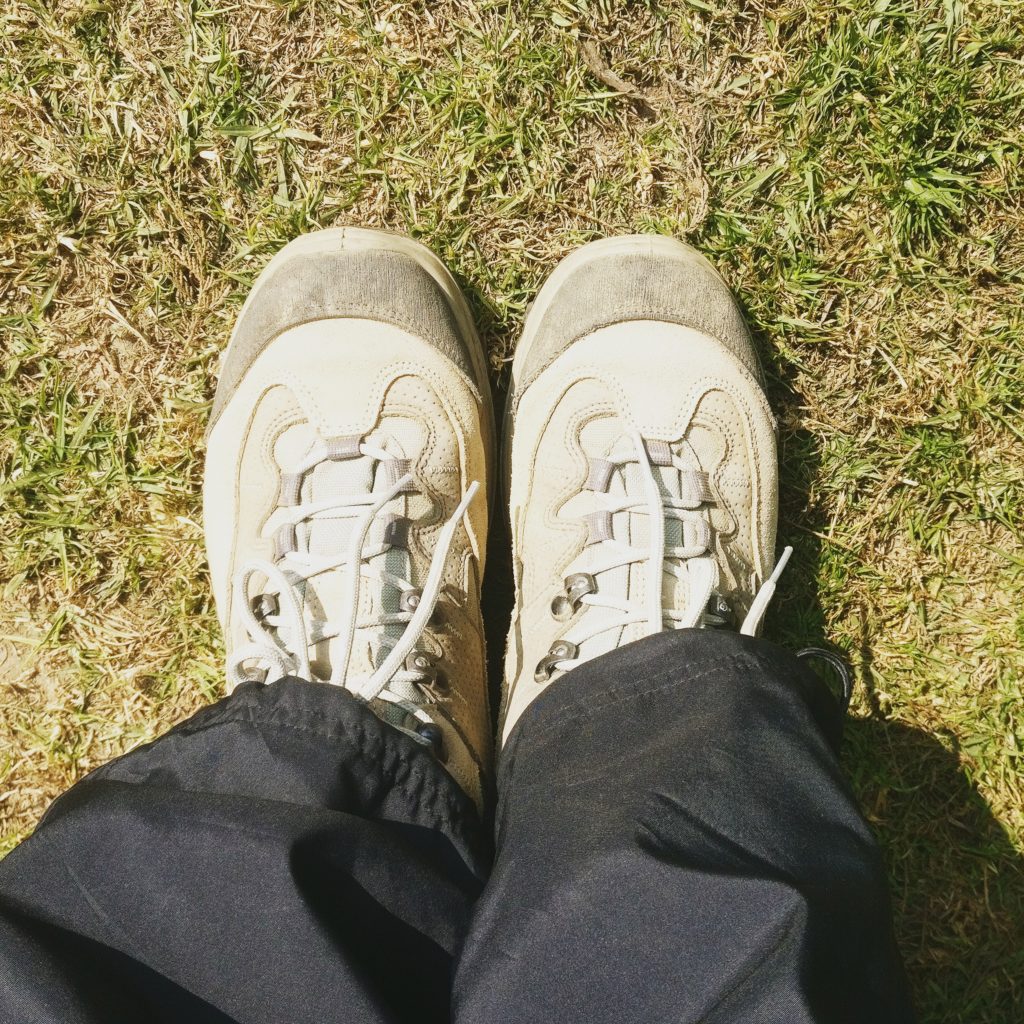
One of the essentials of trekking is having good pair of Shoes. And seldom I see people investing in them. In my earlier treks, I have come across few first time trekkers who come for a Trek in their normal sports shoes like Nike, Puma, Reebok and the likes of it. Like seriously! Sports shoes on a trek. Its a big NO. Both Sports shoes and Trekking shoes have different functionality and different jobs to do. Sports shoes are meant to work on a city terrain and trekking shoes on a rugged terrain. In the mountains, you need sturdy shoes to take on various terrains (rocks, rain, crossing streams, snow, jungles) and challenges. There are many brands and variety of trekking shoes available in the market. In fact there are different shoes available for different kinds of trek like hiking shoes, trekking and expedition boots. Depending on the trail, weather and duration of your trek, select the best suited one. Usually go for ankle-length, waterproof shoes with a good grip. Ankle-length shoes support and protects the ankle from the usual twists, waterproof shoes protects the feet during rains and from getting wet while crossing the streams and good grip gives you a strong hold while walking on rugged terrains.
3. No more Denims

Image credit: www.levistrauss.com
Why would you want to burden your already tired legs with your denim weight! When you are in the mountains, you really can’t say how the weather is going to be like. One moment, the sun might be shining bright on you, the other moment you might be fighting the fierce rains and gusty winds. There can also be days of crossing rivulets that can leave your clothes wet. And its a known fact that denim gets heavier the moment it comes in contact with water and trust me, its quite uncomfortable walking in wet pants in the cold. Important things to be considered while selecting pants are the terrain, the weather, fabric, comfort and mobility while climbing. On high-altitude treks which also involves wet weather, go for light-weight, quick dry pants with multiple pockets to store all your knickknacks. Light-weight pants are easier to pack and carry in your backpacks and are breathable for your body. You can select from various options to suit all kind of weather. You can select from standard pants, convertible pants (love them for its versatility) and roll-up pants.
4. The Power of Layering
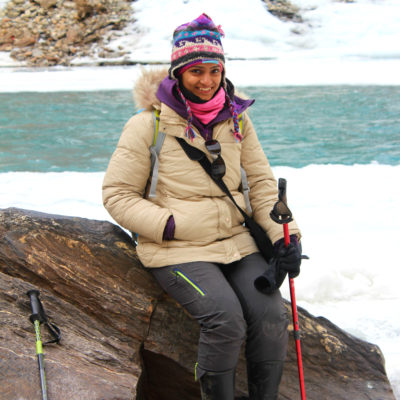
Best way to beat the cold is layering up, it keeps you warm. I usually wear a full sleeve shirt as my first layer. This has dual advantage one it protects my arms from the sun and two if the weather suddenly turns cold, it acts as my first layer to protect from the chill. Instead of stuffing your backpacks with too many clothes and jackets, be smart and select the good ones. The best way to trek is going light on your packing. No, you don’t require new pair of clothes everyday. All you need to pack is two quick dry t-shirt and pants, one thermal for the night, one rain jacket, one fleece, one wind proof or the main/outer jacket , gloves and for extreme cold condition one down jacket. And when it gets too cold, just layer up with these and you would be just fine. Along with this do not forget to carry scarf, cap and snow glasses.
5. Utensils
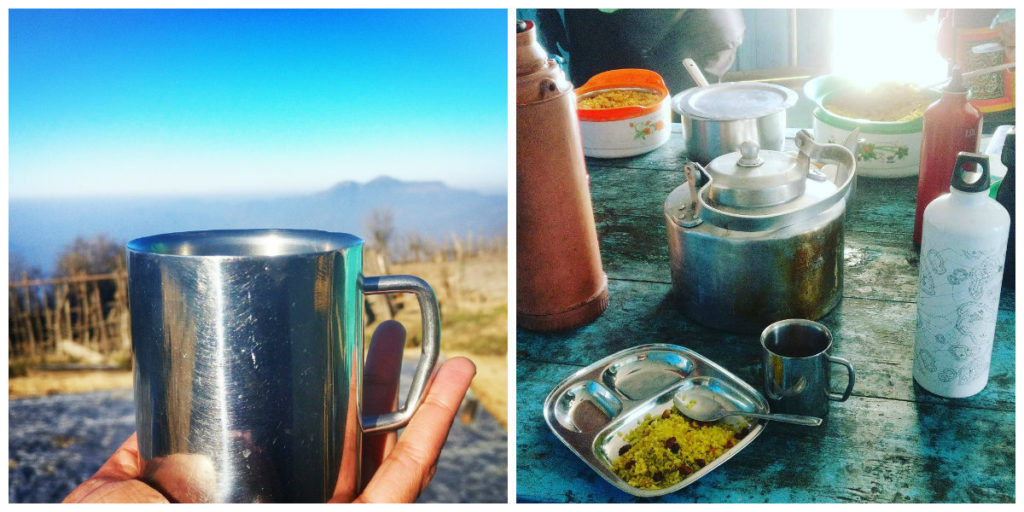
Do not carry plastic plates, firstly they are not good for the environment and secondly, they are tough to clean. Imagine the weather is 5 degree, cold and windy and you are in the open valley, standing in queue to clean your greasy plastic plate and bowl. All your efforts of cleaning it goes in vain, the stubborn grease refuses to leave the warmth of your plate while you are being frozen in the cold. That’s where the good, old steel fella comes into rescue. Steel takes very little water and is easier to clean. Go for steel plates, tiffin boxes, spoon, fork and mug.
6. Toiletries
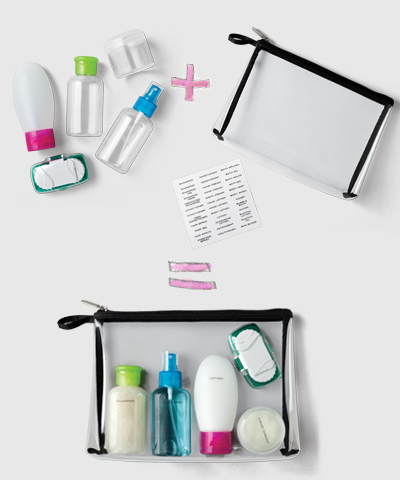
Image Credit: www.pinterest.com
Trekking in the mountains means no luxury, so why carry and load your backpacks with shampoos, cosmetics, wet tissues etc. You are not going to have a shower anyways. Essential things to be carried are tissue roll, good sunscreen, moisturizer, lip-balm, toothpaste, brush, comb, maybe a hand-sanitizer. I carry multi-use antiseptic cream “Kailash Jeevan”, it works wonders and can be used as moisturizer, sunscreen and lip-balm hence you do not have carry separate products. Lot of the trekkers also use wet-tissues, but I would advice you to refrain from this. It’s harmful to the environment and takes upto 100 years to biodegrade. For that matter, even tissue rolls are not a great friend of environment, so use it minimally. Now-a-days there are also eco-friendly options available like shunya.
For the ladies, if you are in your periods while trekking please do not dispose off the sanitary pads/tampons in the mountains. Like tissue papers, sanitary pads are harmful to the environment. Roll the used ones in a newspaper and keep them inside a ziploc bag and dispose off the used pads once you are back to civilization. But, the best alternative to use are eco-friendly pads or cups like Saathipads, made from banana fibre.
7. First-aid Kit
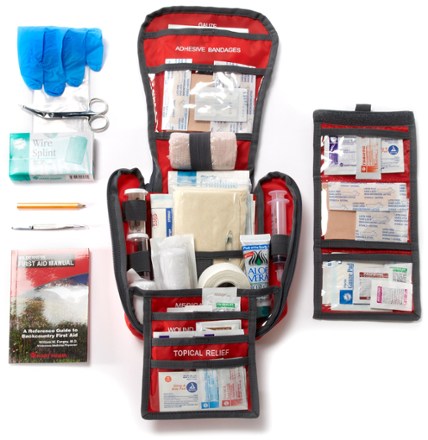
Image credit: www.rei.com
Trekking can be dangerous as much as it is fun. You can never predict what situation you might get into, hence always be prepared for yourself and for others too. It is a must to carry first-aid kit. You can check Red Cross for the list of things to be carried. Also, include basic medicines for headache, cold-cough and fever and ORS packets. If you have any other health issues or are on some kind of medication, then do not forget to carry your medicines.
8. No Littering
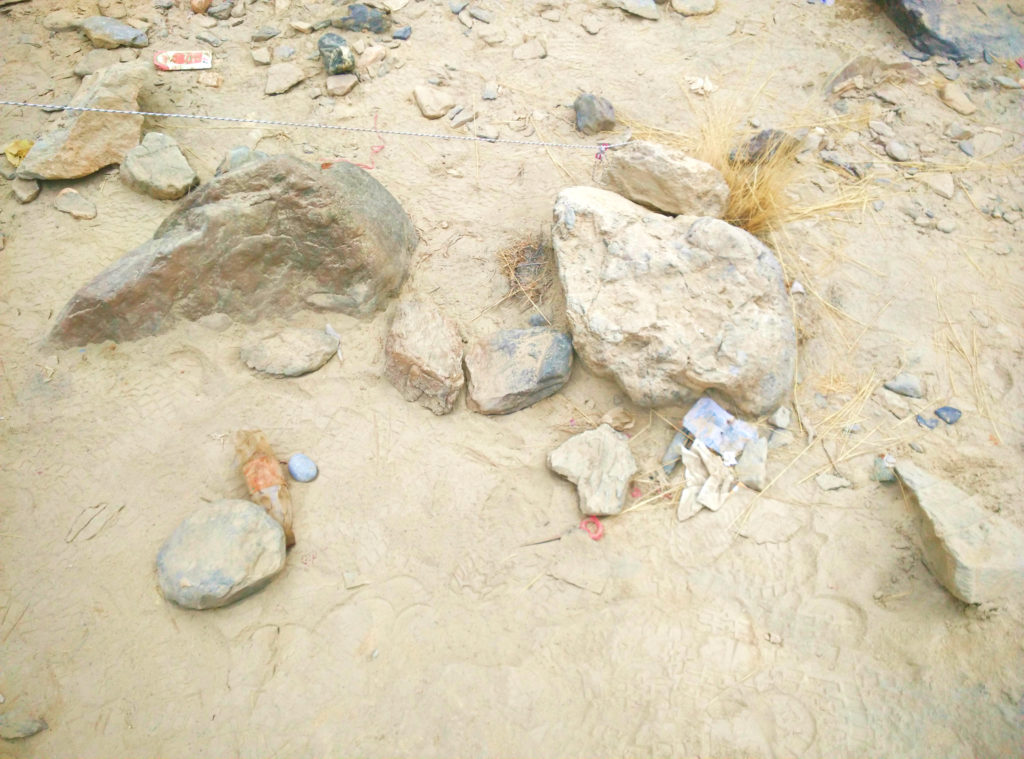
Most of us go on treks because we love nature then why do you we end up littering it? I have come across many so-called nature lovers who do not even think twice before throwing a wrapper in the mountain. Increase in the number of tourists/trekkers have also increased the trash in the mountains. Often you will see empty plastic bottles and wrappers on your path while trekking. Let’s be a responsible trekker by not contributing further in creating this mess. Please carry a trash bag to collect the discarded wrappers, tetra packs etc on your route and also to dispose your personal trash. Once you are back to civilization, discard it properly.
Note: All my work and images are under copyright. Please contact if you want to use it.

